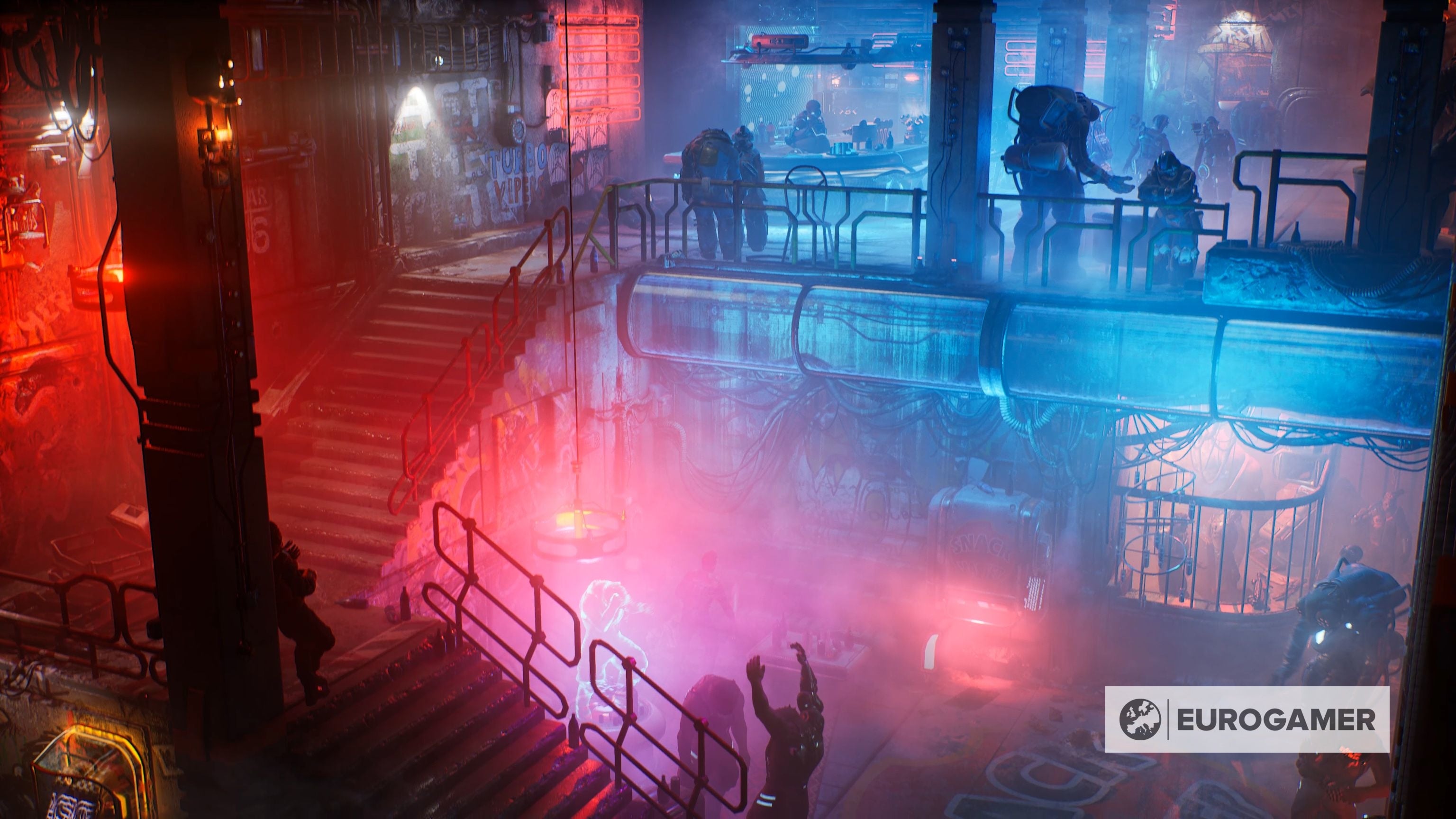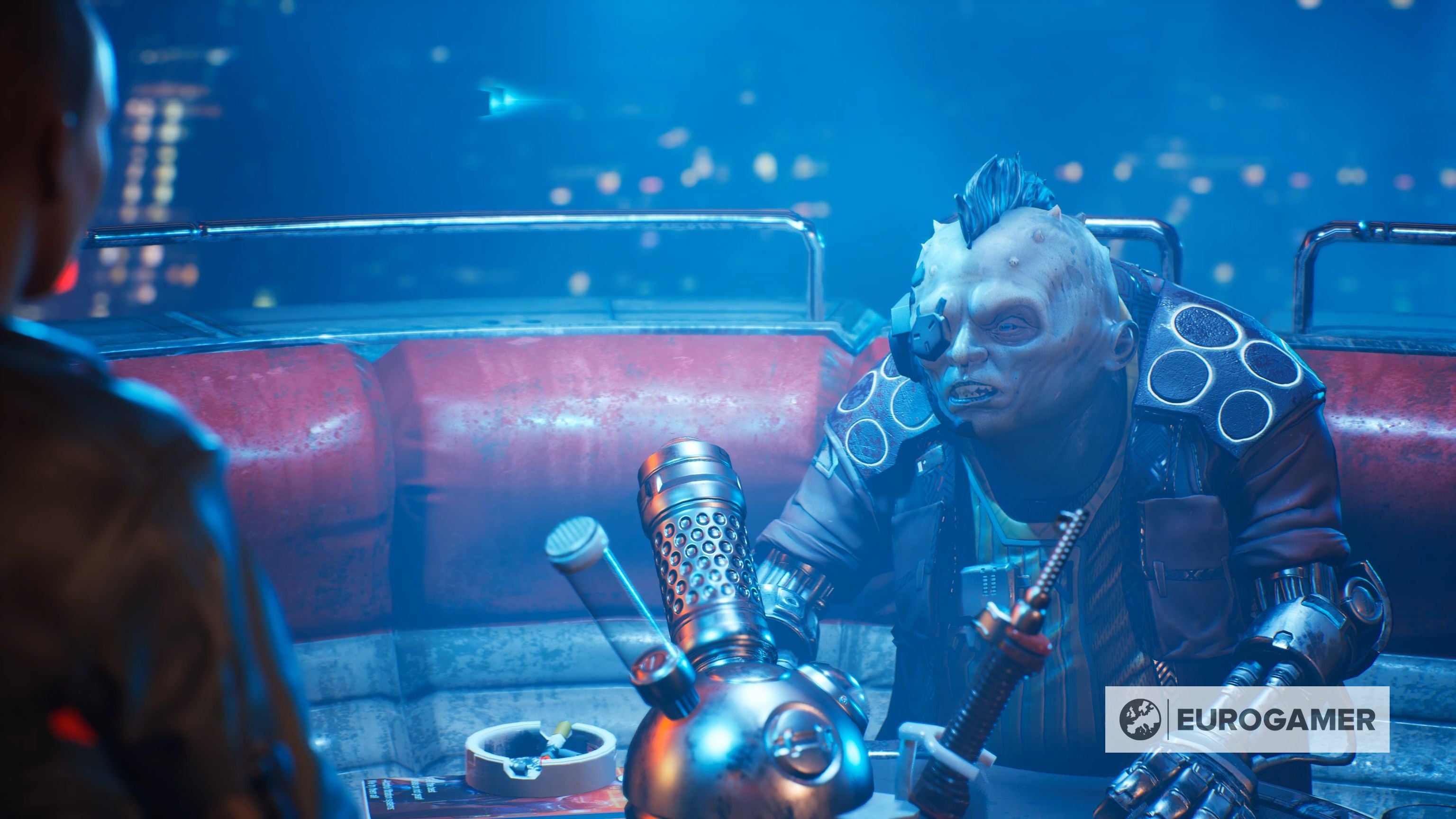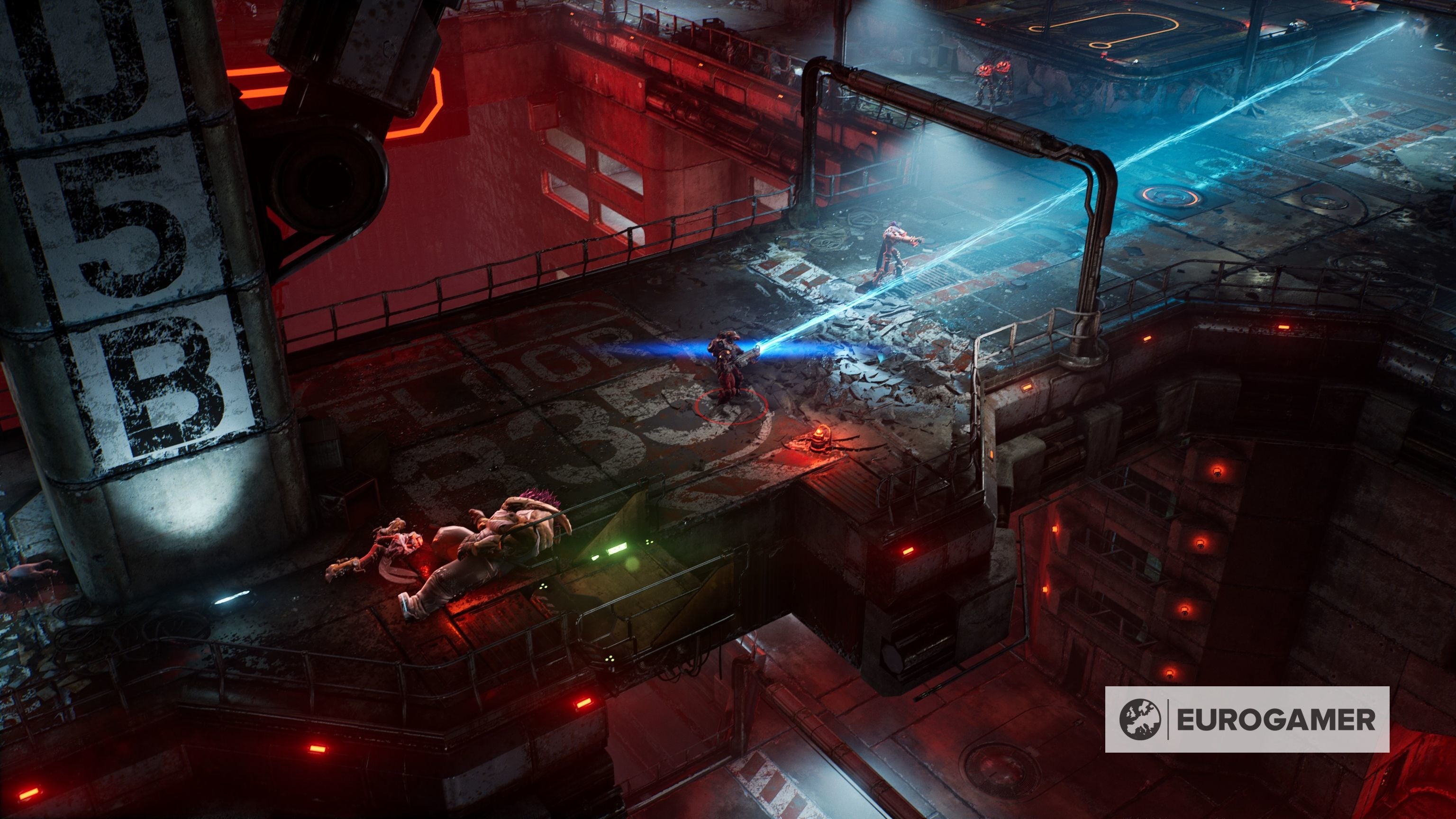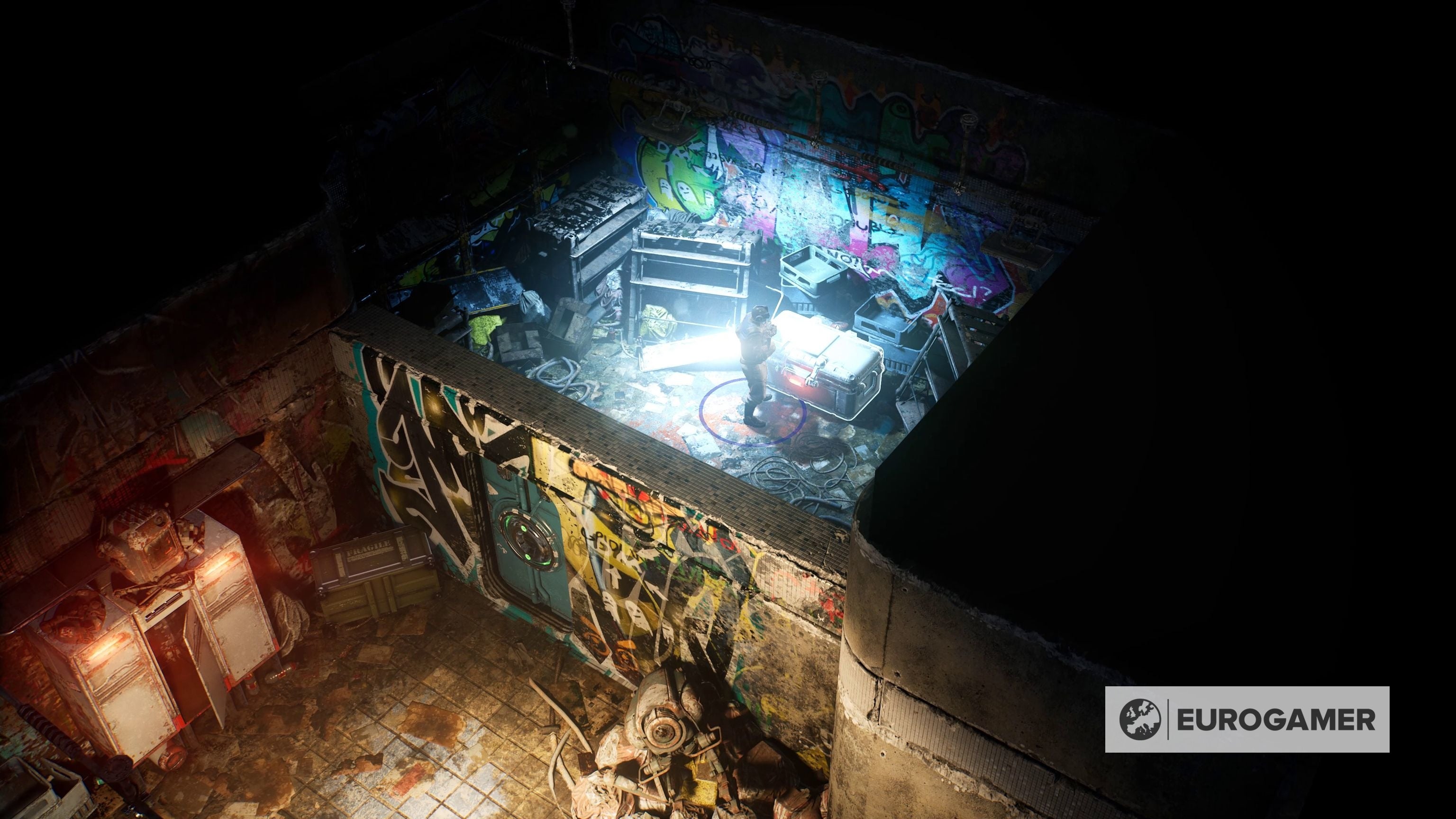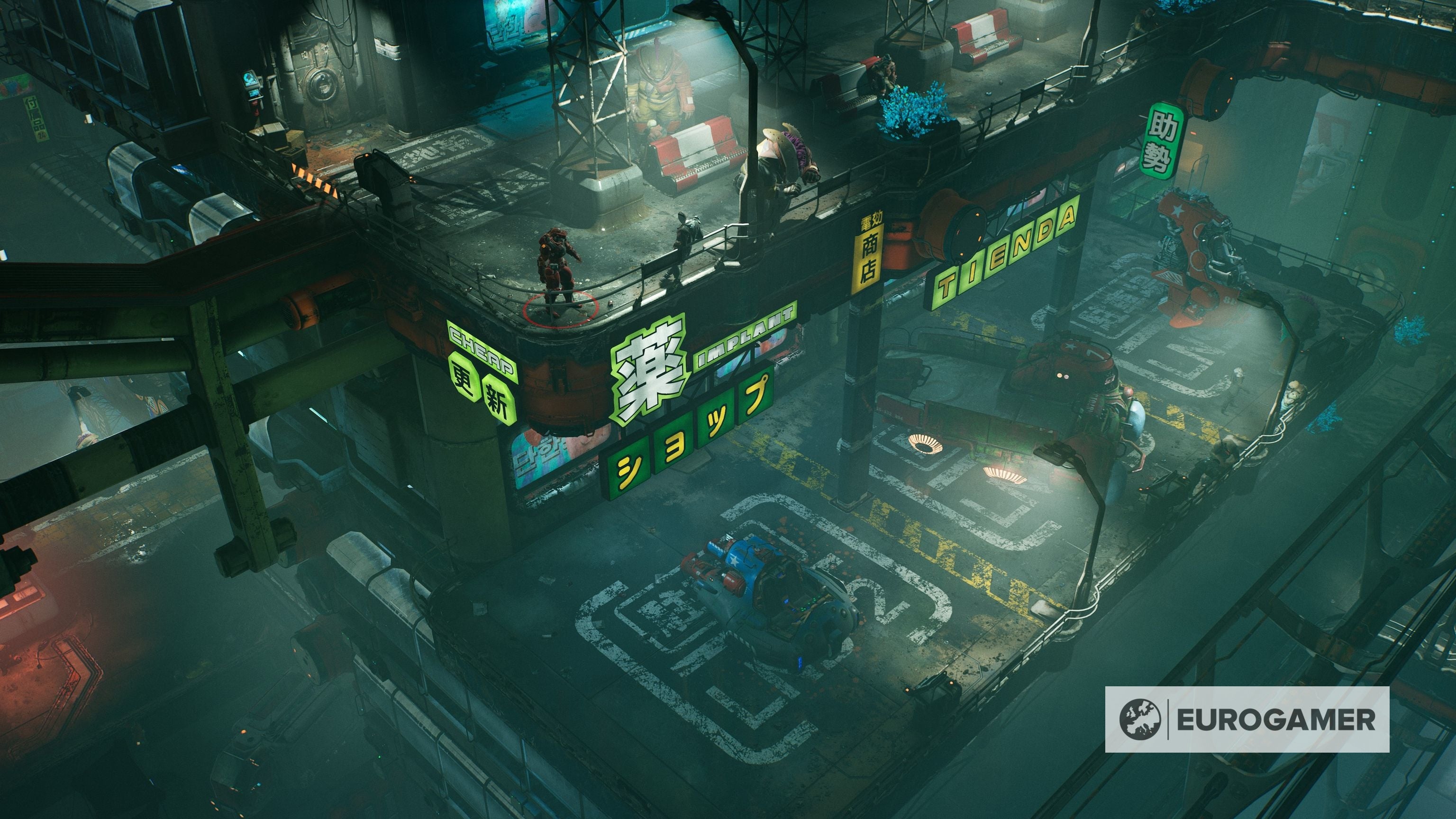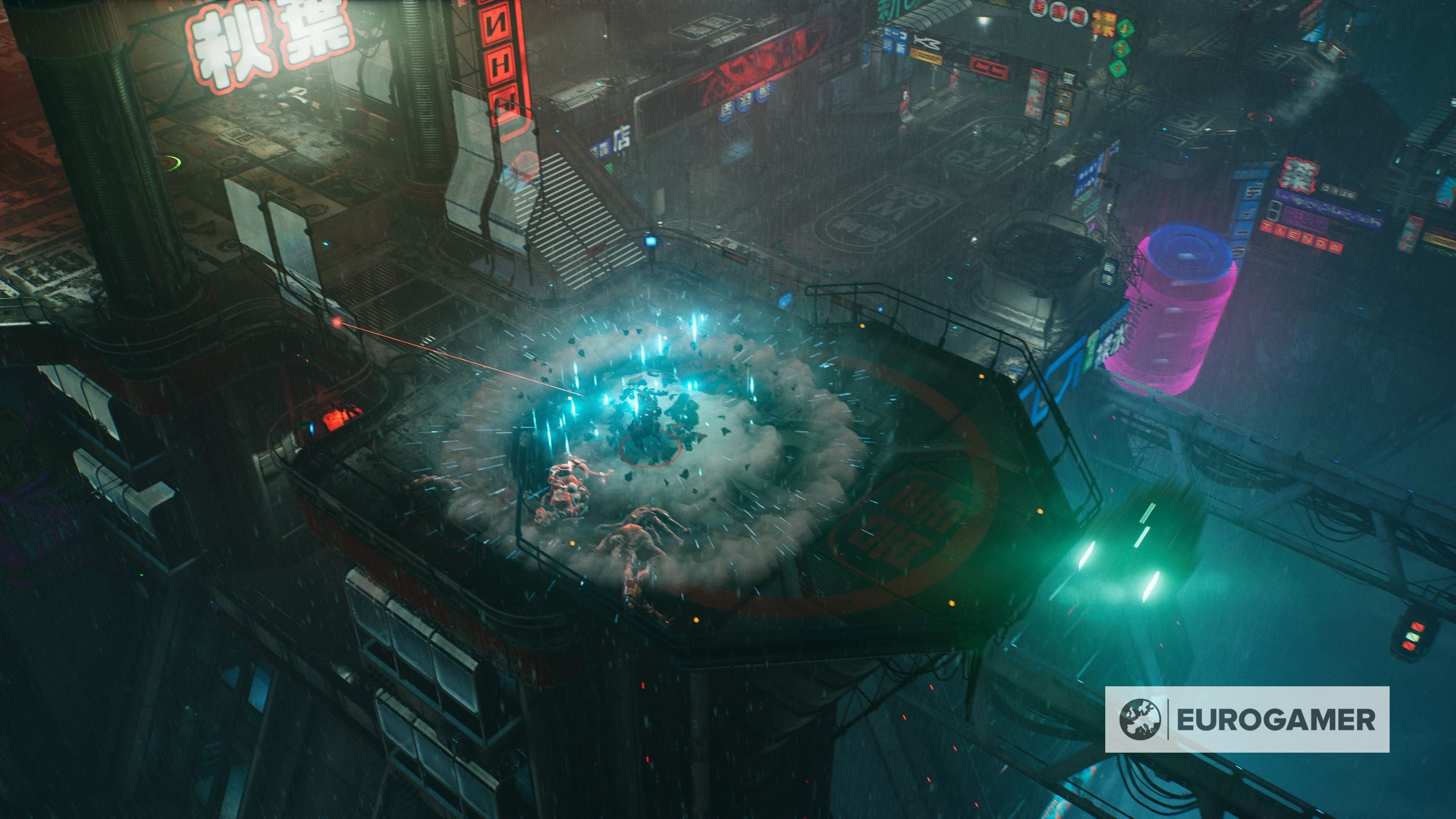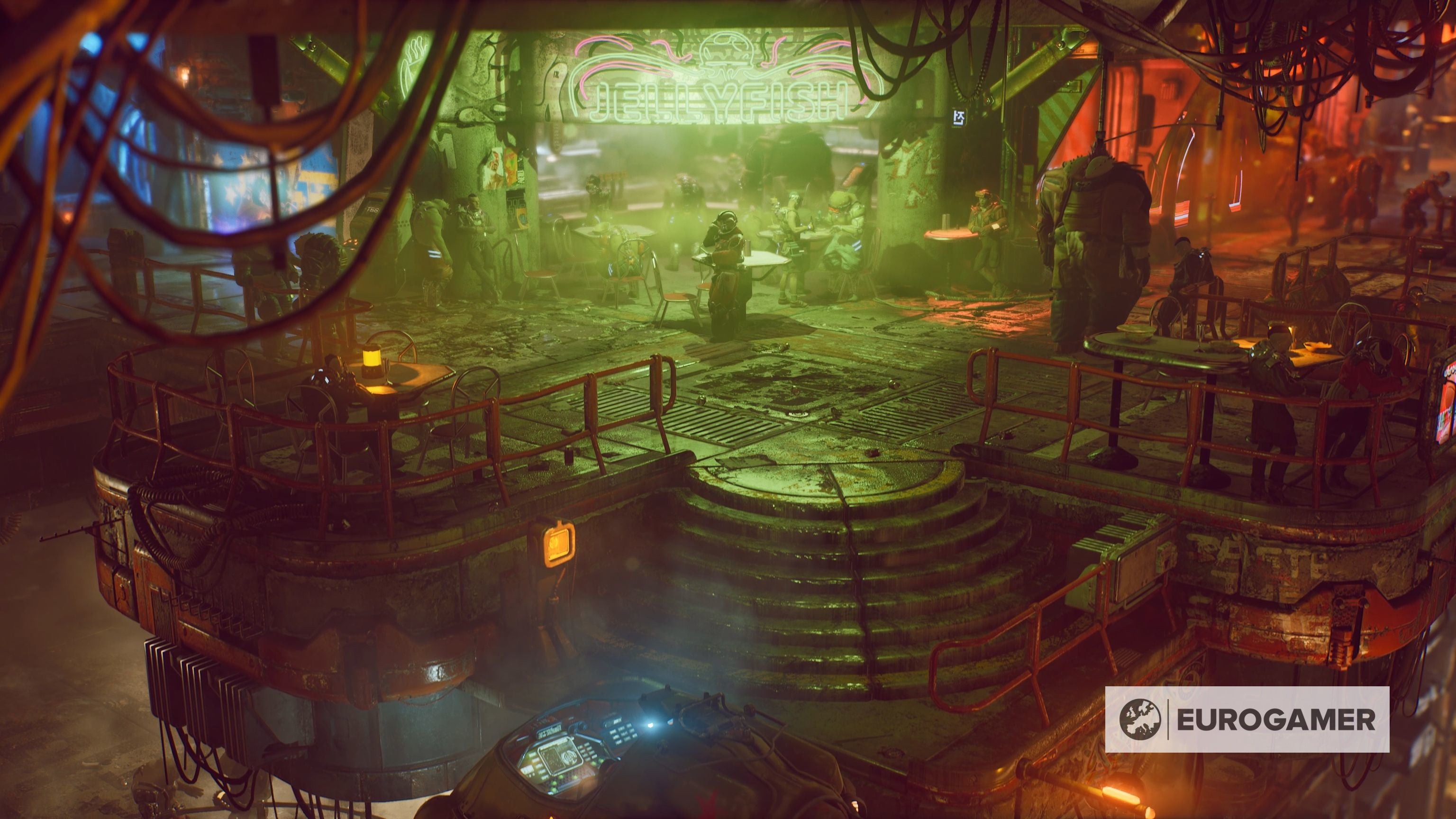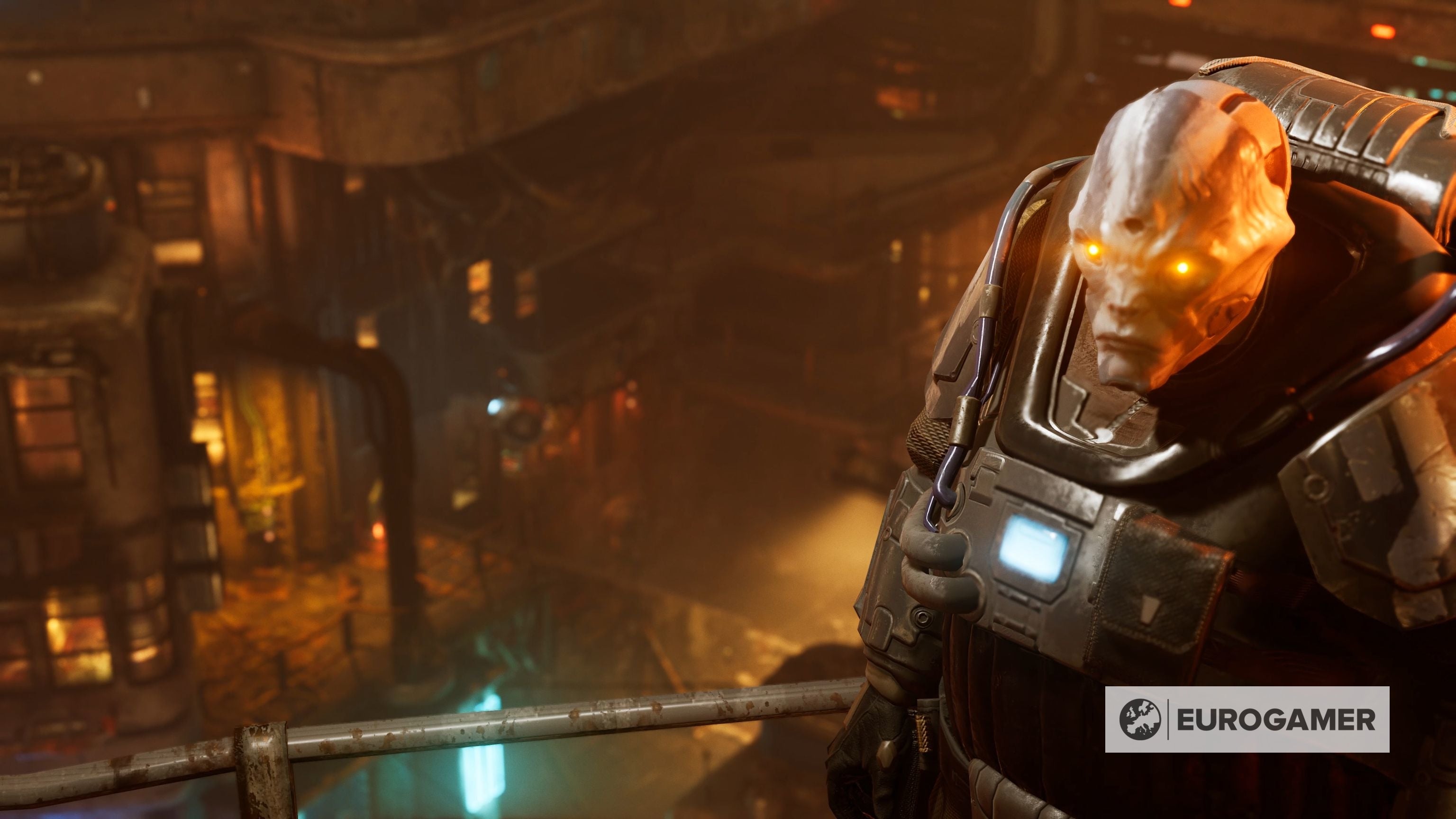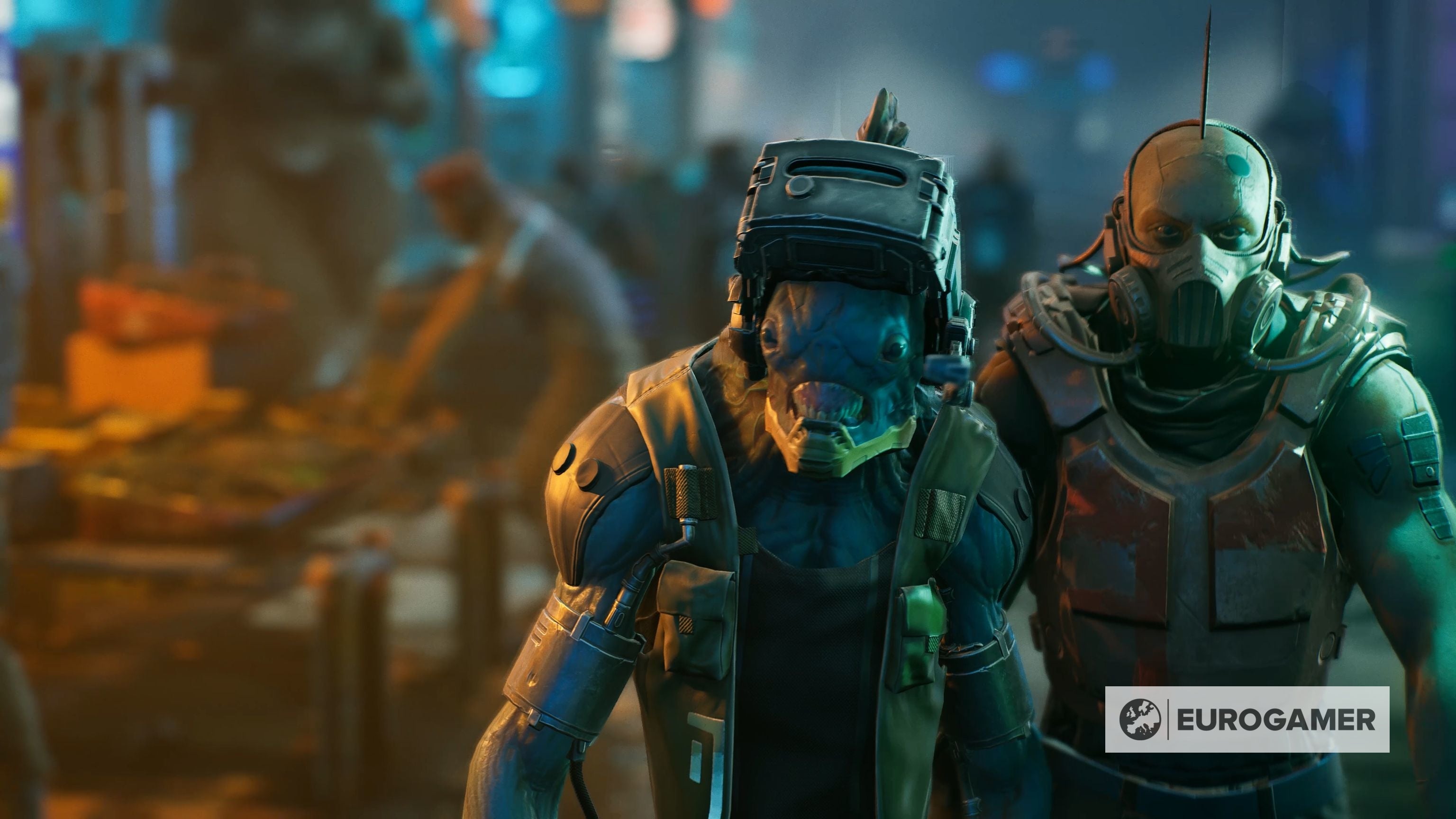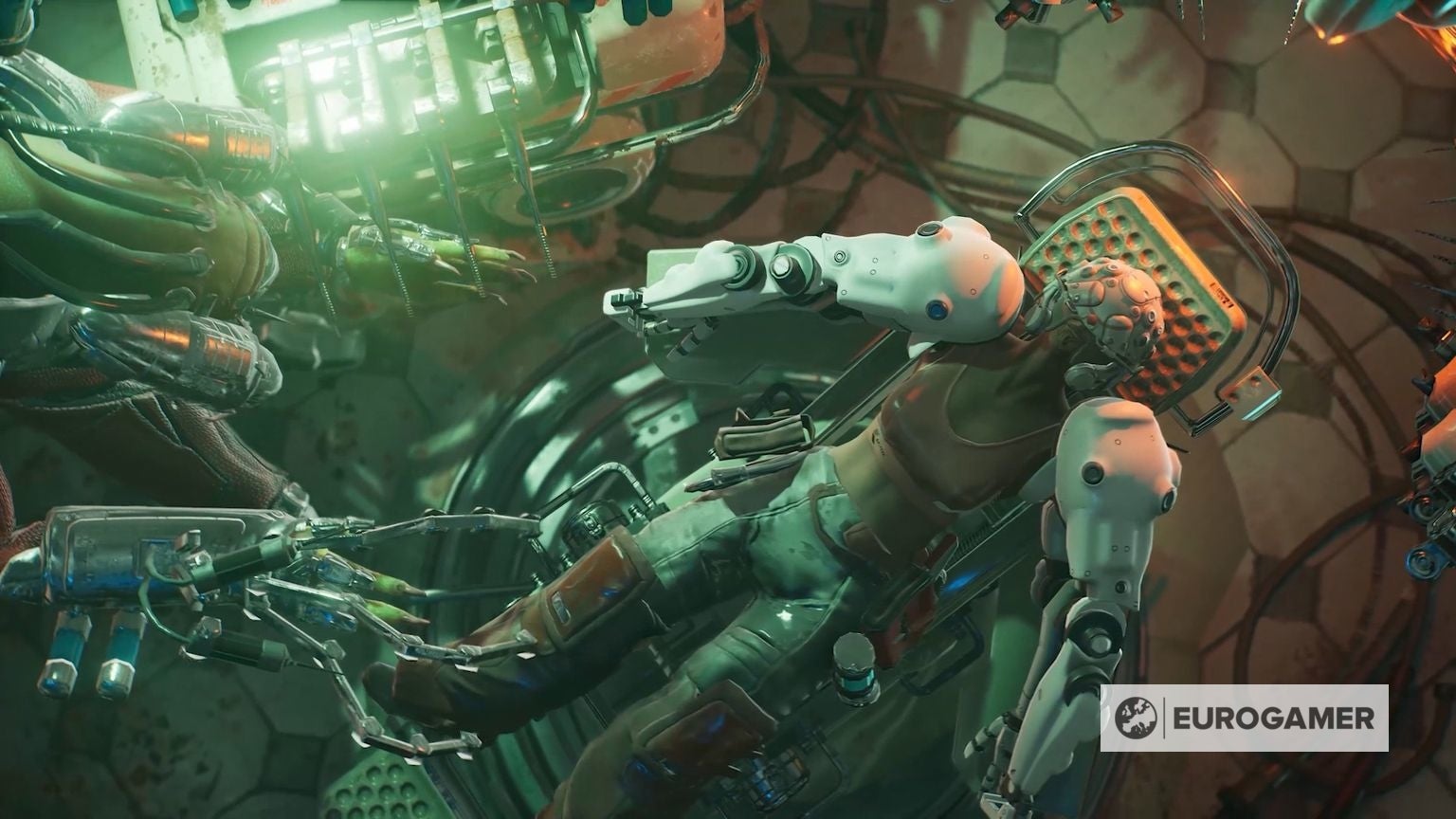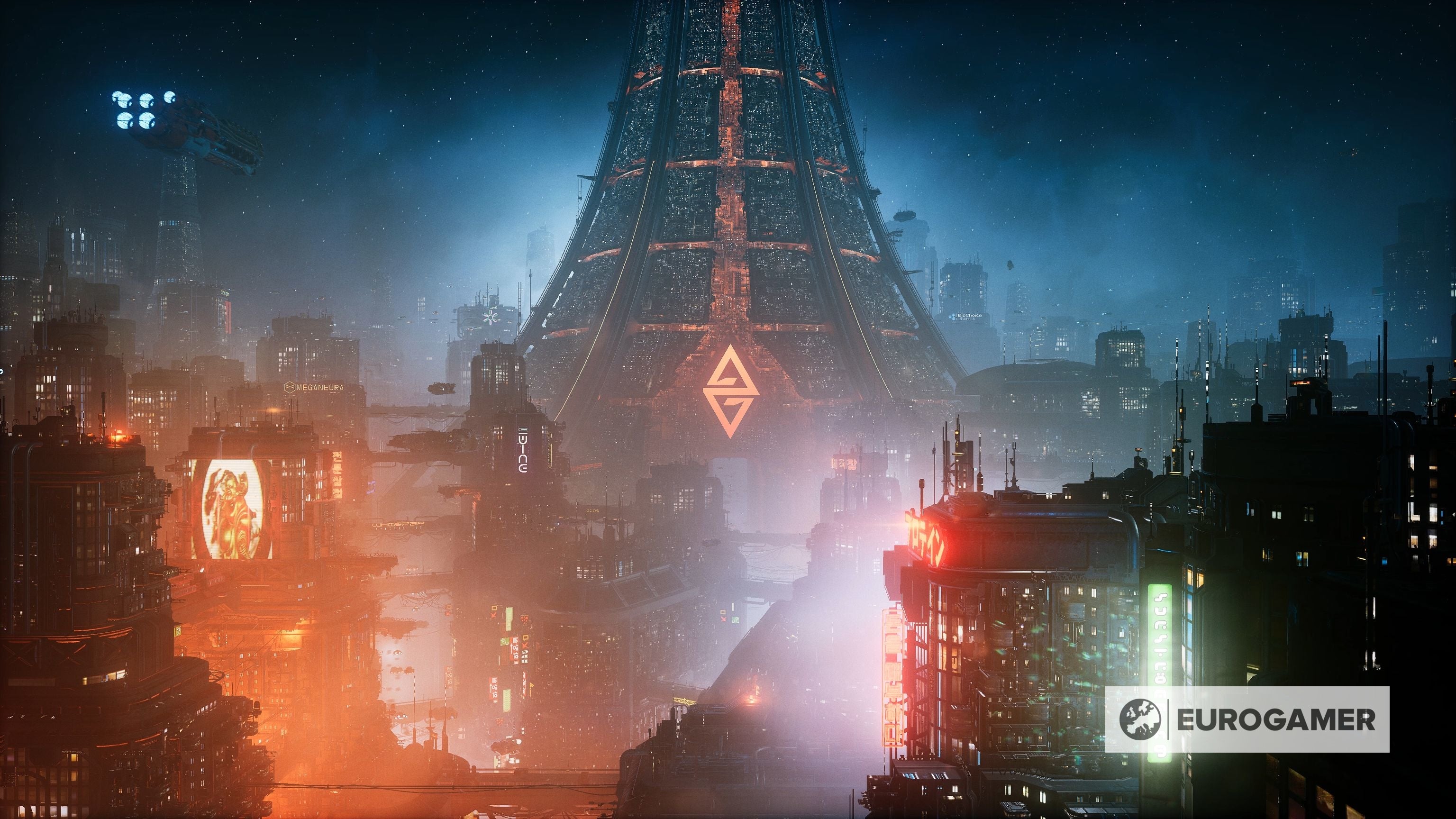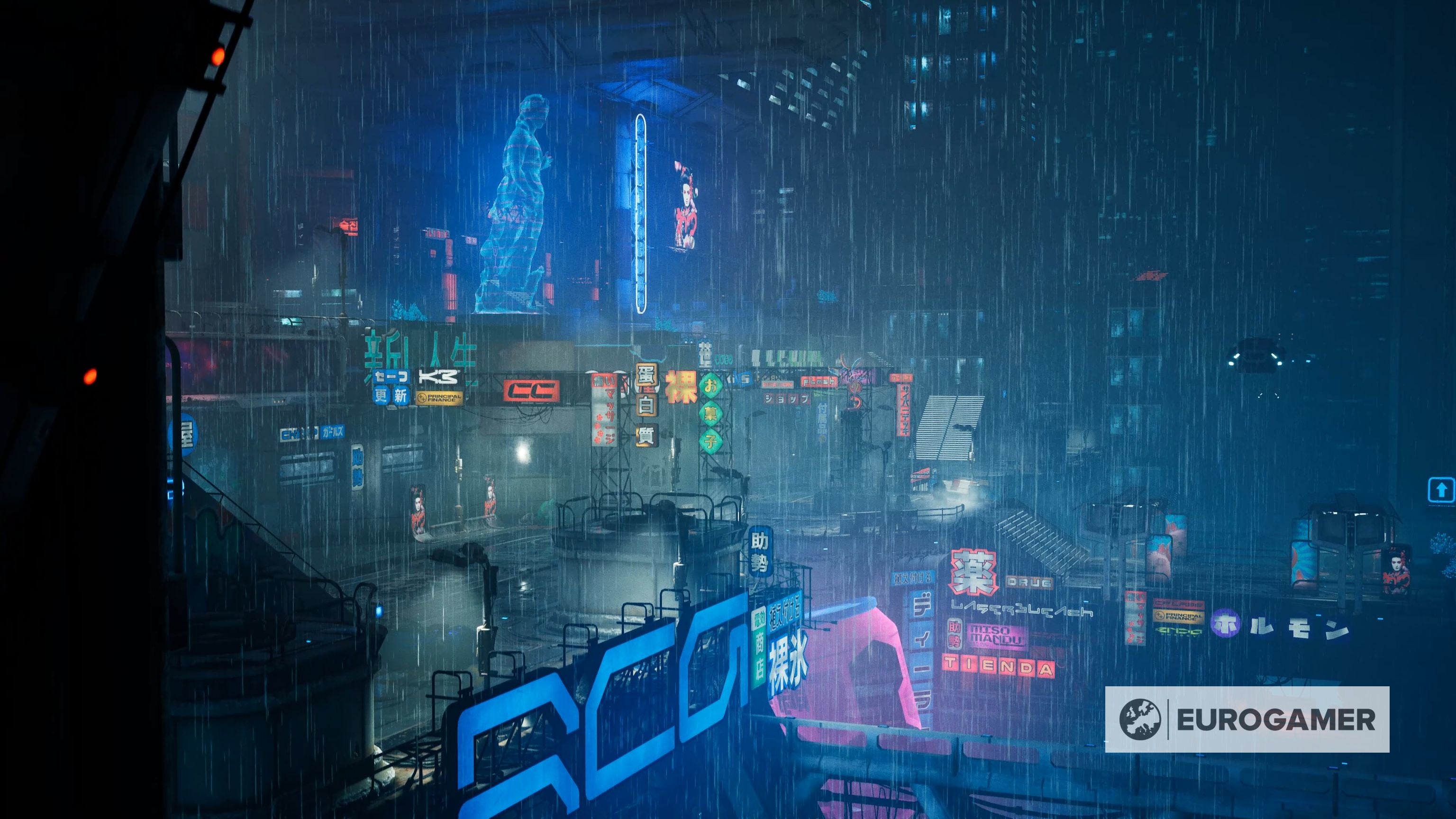Berg and the rest of the very small team at Neon Giant seem especially keen to emphasise, too, that these two games are different beasts. You would think that’s pretty obvious - The Ascent is an intimate, top-down twin-stick shooter, for starters, not a blockbuster open world - but still, point taken. Do not compare The Ascent to Cyberpunk 2077. It is tempting though. The two might well be different beasts but, playing the first hour or two of The Ascent, the impression is of a kind of alternate-universe version. It’s surprisingly RPG-heavy, surprisingly stylish, surprisingly gorgeous, frankly. The core team at Neon Giant is just twelve people strong, a new studio founded by some “former AAA” developers with a bit of lingering frustration about the “waste” that comes with big-budget development, and they’ve made a game that’s focused but also clearly quite ambitious. This is really the point here, too, more than the genre stuff. The Ascent is the type of game you get when a dozen veterans get together in a room and make whatever they want. My demo began with a fairly run-of-the-mill intro to shooting little cyber goblins with a handgun. You’re a gun-for-hire of sorts, working for a big company called The Ascent Corporation (this is where the game gets its name from, by the way - it’s not actually a game about ascending a big building or anything, as far as I can tell). You get called in to clear out some of these little melee-only nibblers from the bowels of some sprawling, rupturing mechanism. The twist of the early combat is in the aiming, where the left trigger has you raise your gun to shoot at head-height, staggering enemies or allowing you to hit ones that are slightly up a few stairs, or over cover if you find yourself behind it. There’s an odd - unique is a better word, or maybe apt - sense of verticality to The Ascent’s action. Much of it is about kiting - running backwards while shooting, basically - but high-aiming makes you move slower but also makes the enemies that are running at you move slower too if you hit them and cause the stagger, so you must strike a balance. At first it’s all a little simple, but towards the end of my session I started to dig into the combat’s systems a little more, and crucially the depth is there. It’s an RPG, which I’ve mentioned but feel bears repeating, as The Ascent doesn’t really advertise itself as one. You level up, spend those skill points on passive attributes like your weapon handling or your balance, which impact things like reload speed or dodge cooldowns or, as the game unfolds itself a bit more, the interesting things like active abilities and cybernetics. My active was a strong melee smash, which was simple but satisfying, while the cybernetics I never managed to unlock. Alongside your level of course comes money and crafting components. The crafting is mercifully simple: pick up a one-size-fits-most component, take it to a gunsmith, and they’ll make your gun better. Money goes towards gear - guns, armour, cybernetics - and it’s earned in all the usual ways, from popping out of chests and enemies, selling spare gear you find around the world, and completing side missions picked up from chatty townsfolk. This is the other side of The Ascent that piqued interest, too. The world is very cleverly interconnected, with one mission dungeon, if you could call it that, flowing into an enemy free hub, into another hub, into the next mission area. It’s old school adventure game stuff, Zelda-like, which wasn’t quite what I expected from a twin-stick shooter but works nicely, the option always there for you to nip back into town to upgrade something if you’re finding the enemies a little tough. I did, at times, find them a little tough. The first mission’s basement goblins were a breeze which maybe lulled me into complacency, but human enemies are a different kind of problem, with medium-paced bullets, often coming from out-of-shot, making for a tricky opponent to your pretty sluggish dodge-roll. Again it’s a game of kiting, drawing the melee chasers out from the shooters then darting back in, and the RPG nature of it means there’s always a spot of doubt lingering about whether you’ve grinded enough gear for that area, or upgraded the right thing (there are a good half-dozen kind of resistances to think about which your armour, for instance, which suggests a nice amount of depth again but doesn’t couple well with a demo that doesn’t explain what kind of damage your enemies actually do). When you do find a nice equilibrium of gear and weapon familiarity, though, combat can click. Cycling through dodges, staggering fire, grenades (a new charge of one is earned by dishing out a set amount of damage, governed by another passive ability), melee abilities and the rest is enjoyably zen, like all good combat, and I suspect it to improve as the weapons get a little more elaborate than my early-game pea-shooters. Most impressive of all, though, is the world. At first glance it’s all a little genre-typical, but the details set it apart. The end of that starter mission, for instance, features a great, rolling sphere fixed in place, designed as a kind of rudimentary industrial AI (called an SI in the game) that you needed to restore. Watching it boot up and whirr into action is hypnotising. As is looking into the distance, one of my favourite hobbies in early-generation games. Sneak a glimpse through a gap in some pipes, or off past the edge of a little bridge or walkway, and it’s just all detail. Detail on detail, vast crowds, great chasms, roaring car chases in the sky as a couple of corporations duke it out over whatever. This stuff is all there because someone fancied making it - always true of games, such is the magic of them - but you can really feel it with The Ascent. “The stuff you’re talking about,” Berg says, “like with that rotating SI - that’s exactly the kind of thing we can do thanks to being a small team, because there was one person saying: ‘We could do this?’ ‘Well can you do it yourself?’ ‘Yeah!’” In a “big studio,” Berg explains, “that would be a lot of people, several meetings and a lot of red tape, just to get there and to have it become a thing in the pipeline. We can be much more ‘Wild West’ with what we do.” As long as people “keep their eyes on the prize, so to speak,” he laughs, “it can lead to some pretty cool things.” “We worked on fantastic games in fantastic studios, and I don’t want to take anything away from that, but we still saw a lot of that waste, be that content not being used or more than anything, waste of potential of people - because when you’re 500 people, it’s very easy to turn into a number. And it’s very hard to bring forth 110 percent out of everything. And we just felt there has to be a different way, there has to be a more efficient way, for a very particular type of people.” Berg is keen to emphasise the obvious point here, that there’s room for everyone these days. “There’s a place for 2000 people games absolutely - and those games probably need those 2000 people to be made,” and the same goes for the “one man shows, the two hour narrative experience, those are great.” But, he says, “I also think it’s important to realise that this wasn’t possible 10 years ago, because releasing now with digital distribution changes everything; the tools, with us using Unreal Engine, change everything; and also more and more people are becoming seniors in the industry, it’s getting older and older. I don’t think you can do what we’re doing as a junior - and that’s not to say that the juniors aren’t amazing developers, but we are relying a lot on our experience from triple-A, and we’ll see more people like that.” Game Pass, too, has had an impact here. “Where there’s a will there’s a way,” Berg stresses, but “I think more than anything it’s given us confidence. We’re pretty confident developers overall,” he laughs, but Xbox getting involved early on gave them a lift, in part because it was based on them seeing the game itself, in an earlier form, and saying they had something special. “To hear that, as a new studio, within what was less than a year into development, meant we’re onto something, you know? We’re on the right track. And just having that continuous thing helped a lot.” I told Berg I’d enjoyed what I’d played, and agreed that they are indeed on the right track. “I take great pride in hearing you say that,” he said, “because yeah, we can never compete with the biggest games on scale and scope, but we want to with quality.” Quality is a nebulous term, but as far as alternate-universe Cyberpunks go, The Ascent is looking good.


